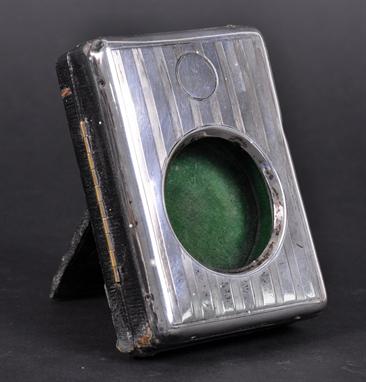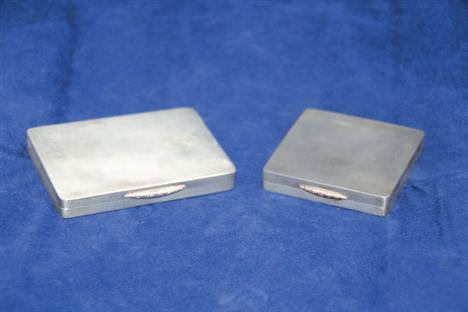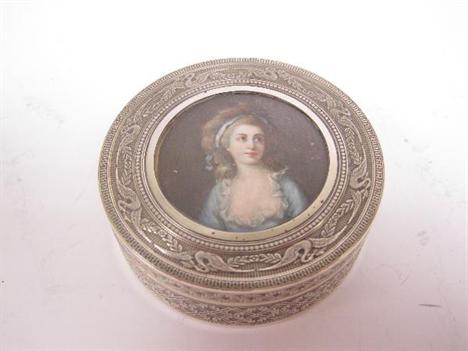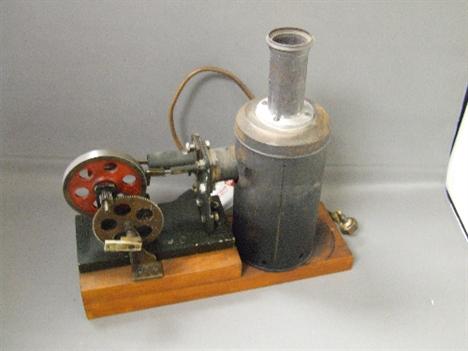186062 Preisdatenbank Los(e) gefunden, die Ihrer Suche entsprechen
186062 Lose gefunden, die zu Ihrer Suche passen. Abonnieren Sie die Preisdatenbank, um sofortigen Zugriff auf alle Dienstleistungen der Preisdatenbank zu haben.
Preisdatenbank abonnieren- Liste
- Galerie
-
186062 Los(e)/Seite
Aviation - A mahogany planter, made from the propeller of a Fairey IIID, marked to base `Made From The Propellor of a Fairey IIID 1929` 37cm high A Mounted Indirect Ordnance Fuse, marked No.199 IV FL 10/38 & RL 12/38 537., 10.5cm high. The Fairey IIID seaplane was built by the Fairey Aviation Co. Ltd. as a development of their 1917 F127 reconnaissance seaplane design for the Royal Naval Air Service, the IIID had a more powerful Rolls Royce Eagle VIII engine and entered service in 1924.
A VICTORIAN SILVER GREAT EXHIBITION COMMEMORATIVE NOTEBOOK, NATHANIEL MILLS & SONS, BIRMINGHAM, 1850 the cover engraved with a view of the Crystal Palace on an engine-turned ground framed by scrolled foliage, the reverse inscribed `Annie / 9th July 1851` against a geometric patterned ground, containing six ivory note sheaves, the first with contemporary inscriptions, attached contemporary silver propelling pencil 7cm wide excluding suspension chain The obverse of the first ivory sheaf inscribed in pencil: `With M Beachcrofts / best love / 10th July 1851` and in smaller script between lines: `to annie hunter`, the reverse inscribed: `Anna Hunter Beachcroft / 21 Orsett Terrace / Hyde Park` and to side: `Left Aps? 10th July 1851` Anna (or Annie) Hunter Beachcroft, née Wood, was married to Robert Beachcroft on 6th July 1851 in her hometown of Ayr, Scotland. She must have come down to London shortly afterwards, staying in her father-in-law`s house in Orsett Terrace and visiting the exhibition on the 9th and/or 10th of July. Her husband was a solicitor, becoming a partner in Maberlys & Beachcroft, sometime of 17 Kings Road, Bedford Row, Holborn. It would appear that the notepad was a sweetly topical wedding present or memento from her new brother-in-law, Matthew Beachcroft. (National Archives, PROB 11/2238, National Archives, PROB 11/2259, and the International Genealogical Records) Something like 6 million people visited the exhibition (a third of Britain`s population at the time) - they had never seen the like and Charlotte Brontë describes the awe felt by many in a letter: `Yesterday I went for the second time to the Crystal Palace... It is a wonderful place - vast, strange, new and impossible to describe. Its grandeur does not consist in one thing, but in the unique assemblage of all things. Whatever human industry has created you find there, from the great compartments filled with railway engines and boilers, with mill machinery in full work, with splendid carriages of all kinds, with harness of every description, to the glass-covered and velvet-spread stands loaded with the most gorgeous work of the goldsmith and silversmith, and the carefully guarded caskets full of real diamonds and pearls worth hundreds of thousands of pounds... It seems as if only magic could have gathered this mass of wealth from all the ends of the earth - as if none but supernatural hands could have arranged it thus, with such a blaze and contrast of colours and marvellous power of effect. The multitude filling the great aisles seems ruled and subdued by some invisible influence. Amongst the thirty thousand souls that peopled it the day I was there not one loud noise was to be heard, not one irregular movement seen; the living tide rolls on quietly, with a deep hum like the sea heard from the distance. Although items could not be bought at the exhibition itself, there was an emporium specially opened on Regents Street for the purpose and memorabilia must also have been available from other outlets. Vinaigrettes and card cases were also produced by a number of Birmingham firms before the exhibition opened, showing similar views of the Crystal Palace.
A GEORGE III TWO-COLOUR GOLD TOOTHPICK BOX, ALEXANDER JAMES STRACHAN, LONDON, 1818 elongated rectangular, the lid chased with shells and flowerheads within a formal foliate border, the sides and base engine-turned 7.7cm long Stachan is held by many to have produced the best boxes in the Regency period and although gold (as well as silver) snuff boxes with Strachan`s mark appear reasonably regularly, gold toothpick boxes appear to be very rare.
A Dinky No.263, Superior Criterion Ambulance, cream with a red stripe, fair condition, complete with patient on stretcher, boxed; Dinky No.120, Jaguar E Type, red with removable black plastic hard-top, generally excellent condition (corner of windscreen broken), boxed (box lacking two tabs and lip of end flap); and Dinky No.259, Fire Engine `Fire Brigade`, red, fair condition, boxed (box lacking one end flap and two tabs), (3).
A Matchbox 1-75 series No.9, Merryweather Marquis Series III Fire Engine, crimson, gold ladder, black plastic wheels, mint, boxed (box slightly creased); No.26, Foden Cement Mixer, orange, grey plastic wheels, mint, boxed (box with crumpled corner); No.31, Lincoln Continental, metallic blue, black plastic wheels, mint, boxed (box crumpled with two loose tabs); No.37, [Dodge] Cattle Truck, yellow and grey, complete with two white plastic cows, mint, boxed; No.57, Land Rover Fire Truck `Kent Fire Brigade`, crimson, black plastic wheels, mint, boxed; and a further six models, all but one boxed, the latter of variable condition, (10).
A Matchbox `Models of Yesteryear` No.YS-39, Passenger Coach and Horses; No.YS-43, 1905 Busch Self Propelled Fire Engine; No.Y-8, Sunbeam Motorcycle and Sidecar; and other models, mostly by Matchbox and Lledo, including gift sets, (approximately 70); together with a set of wooden wall shelves.
-
186062 Los(e)/Seite

















































